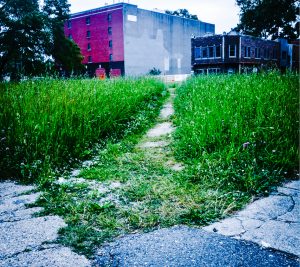Vacancy and Mobility Implications of Informal Footpaths in Shrinking Cities
Vacancy and Mobility Implications of Informal Footpaths in Shrinking Cities
- August 2019
- Journal Brief
- Alec Foster and Josh Newell
This journal brief shares findings from a study that documents and considers the implications of informal footpaths, also known as desire lines, in the Lower Eastside area of Detroit. Using mixed methods—including remote sensing (using Google Earth), physical audits, network and spatial analysis, and qualitative interviews—the study physically maps informal footpaths, documents their change over time between 2010 and 2016, quantifies their impact in increasing accessibility and mobility, and considers how they are perceived by residents.
Download the two-page journal brief using the link at the bottom of this page.
This brief is adapted from the following peer-reviewed journal article: Foster, A. & J. P. Newell. (2019). Detroit’s lines of desire: Footpaths and vacant land in the Motor City. Landscape and Urban Planning, 189(2019), 260-273. Access the full article here.





